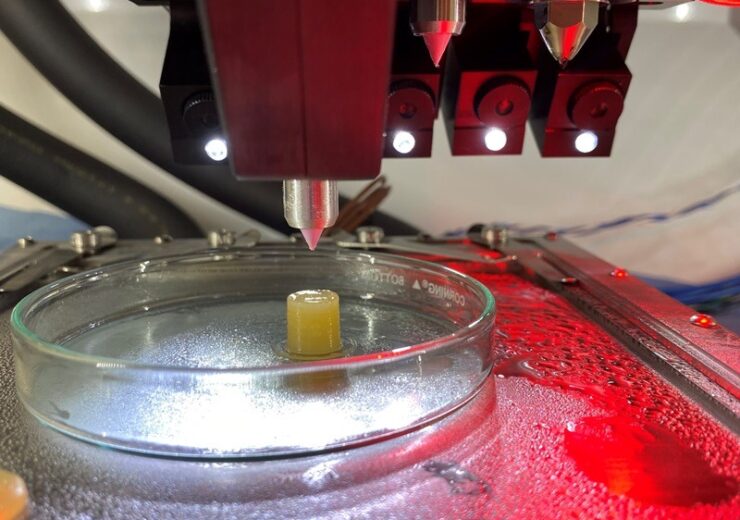The PetVivo biomaterial can be used to create regenerative and/or biologically integrative medical devices, injected particles, coatings, and drug delivery vehicles

Bioprinting PetVivo biomaterial with nScrypt’s BAT technology. (Credit: PetVivo Holdings.)
nScrypt is excited to announce the successful bioprinting of PetVivo® Holdings’ biomaterial, using nScrypt’s 3D Bio-Fabrication Tool (BAT).
The nScrypt BAT technology was able to easily 3D bioprint PetVivo’s proprietary aqueous hydrogel biomaterial in symmetrical structures. nScrypt’s BAT system uses five print heads in an ISO 5 cleanroom printing environment to create medical implants in a hospital setting.
According to nScrypt’s CEO, Dr. Ken Church: We are delighted with the results of our BAT bioprinting of PetVivo’s biomaterial. Our BAT system outfitted with our SmartPumpTM and nFD tool heads precisely microdispenses or extrudes all the ingredients needed to construct living tissue, such as biomaterials, living cells, and scaffolds, with cell viability in excess of 95%. Our BAT uses the same technology as our 3D manufacturing systems, which can make surgical tools and devices for patients with healing challenges.
The PetVivo biomaterial, which consists of collagen, elastin, and heparin, can be used to create regenerative and/or biologically integrative medical devices, injected particles, coatings, and drug delivery vehicles. In addition, the PetVivo biomaterial can be combined with other biomaterials, enabling various kinds of implants to be created. PetVivo’s biomaterial technology is highly suited for the substitution or replacement of slower healing permanent implants used today, especially in orthopedic markets, such as spine and knee. PetVivo’s current product, Kush®, is being sold as an injected medical device particulate to reinforce damaged joint cartilage tissue in lame osteoarthritic dogs and horses by mimicking cartilage components, structure and function.
nScript is working in collaboration with PetVivo to ascertain a technological potential for creating on-demand medical devices in a hospital setting and to recreate biological structures to optimize the healing process. The PetVivo biomaterial mimics the living body’s extracellular matrix that all cells use as support to create tissue. Being able to print the PetVivo biomaterial in combination with other materials in a surgical setting can provide great medical benefit by helping to promote neovascularization, stem cell organization, and overall recruitment of tissue healing cells to mend the body. “We are all very excited to continue developing the PetVivo biomaterial with nScrypt’s 3D bioprinting capabilities and using with other biomaterials to make them more biologically integrative,” stated Dr. Church.
Source: Company Press Release
